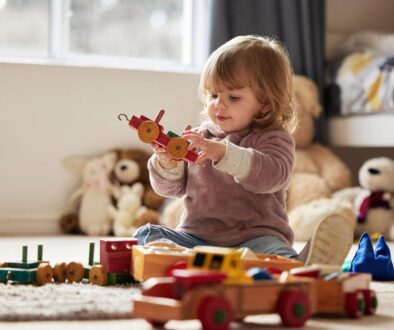Building a Healthy Attachment

Building a healthy attachment with your child is crucial for their development and well-being. It provides a secure base from which your child can explore the world. When children feel securely attached to their caregivers, they are more likely to feel safe and confident in exploring their environment and forming relationships with others. Through a secure attachment, children learn how to regulate their emotions. Caregivers who are sensitive and responsive to their child’s needs help them develop effective coping strategies and emotional regulation skills. Research shows that children who have secure attachments with their caregivers are more likely to develop empathy, form healthy relationships, and communicate effectively with others.
Here are some strategies to help you foster a healthy attachment with your child:
- Respond promptly and sensitively to your child’s cues and signals, whether they’re crying, laughing, or reaching out to you. This helps your child feel understood, valued, and secure.
- Engage in plenty of physical contact with your child, such as cuddling, hugging, and gentle touch. Physical closeness promotes feelings of safety and comfort and strengthens the attachment bond.
- Make frequent eye contact with your child and use positive facial expressions to convey warmth, love, and affection. Eye contact helps your child feel seen and connected to you.
- Spend quality, one-on-one time with your child engaging in activities that they enjoy. This could include playing, reading, singing, or simply talking and listening to them.
- Establish a predictable routine for daily activities such as feeding, sleeping, and playtime. Consistency helps your child feel secure and creates a sense of stability in their environment.
- Practice active listening when your child communicates with you, showing empathy and understanding. Reflect on their feelings and validate their experiences to help them feel heard and supported.
- Support your child’s natural curiosity and desire to explore their environment. Offer opportunities for safe exploration and discovery, while remaining close by to provide reassurance and guidance as needed.
- Be fully present and engaged when interacting with your child, minimizing distractions, and focusing on your time together. Your presence and attention are essential for building trust and connection.
By incorporating these strategies into your daily interactions with your child, you can strengthen the attachment bond and nurture a secure and healthy relationship that will benefit them throughout their lives.





